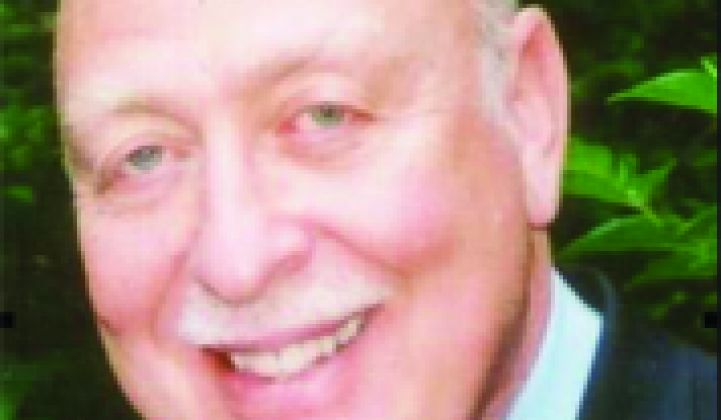It was 1969, the year that Jimi Hendrix took the stage at Woodstock and Neil Armstrong walked on the moon, when Fred Morse – under an order from President Nixon – began examining the role of solar energy for the United States.
The executive order ended up defining his entire career path. After serving as the executive director of a White House task force to assess solar energy as a national resource for Nixon, he managed solar energy projects for the U.S. Department of Energy during the Carter and Reagan years.
Today, Morse is the senior adviser of U.S. operations for Spain's Abengoa Solar, which is developing a variety of concentrating solar-thermal technologies. Morse also serves as the chairman of the concentrating solar power – also known as CSP – division of the Solar Energy Industries Association.
Concentrating solar-thermal power systems use different types of mirror configurations to concentrate the sun’s heat, collect it and convert it into electricity with the aid of a generator.
Advocates have said such systems could potentially be cost-competitive with conventional power plants, but the cost – and risk – of building the first large plants has thus far proven challenging.
Still, the technology has been gaining traction. Among other examples this year, eSolar signed a deal to build 245 megawatts of concentrating solar-thermal plants for Southern California Edison, and BrightSource Energy said it would provide up to 900 megawatts of solar-thermal power to the Pacific Gas and Electric Co. Abengoa Solar also announced that it would build a 280-megawatt solar-thermal plant and sell the electricity to utility Arizona Public Service Co.
Abengoa Solar already has an 11-megawatt capacity solar-thermal plant in operation and is currently building more plants with a combined generation capacity of 260 megawatts. The company also has about 480 megawatts of solar-thermal plants under development.
We caught up with Morse, who is speaking about the future of CSP at a Greentech Media seminar at Intersolar North America on Monday.
Q: During the last year, we have seen a number of concentrating solar-thermal companies sign deals with utilities after a long hiatus. What's changed?
A: Utilities don't have a lot of good options for new power. Fossil fuel has risks. They're unlikely to want to build a coal plant. It's difficult to get coal plants financed. Nuclear is the bigger question mark for a lot of the utilities and costs are projected to be much higher than CSP. Natural gas seems to be their only fossil option and natural gas prices are going up dramatically.
Q: A flood of companies have applied to build solar plants on public lands, which drove the U.S. Bureau of Land Management to freeze new applications in May. Who is going after all that land?
A: Some are project developers who have signed power-purchase agreements, like Ausra and eSolar. Those are real projects and there are not many of them. Then there are people who hope to have a project some day. I won't challenge that desire, but it's not a real project yet. And then there are pure speculators. People with money who say, "This land is going to be valuable to a CSP plant. I think I'll just put in an application and sit on it."
Q: The U.S. Bureau of Land Management reversed its decision in early July, lifting the freeze on new solar-project applications. What do you think of the move?
A: It was the only sensible decision to make. But I still think it is important for them to prioritize their work, since obviously they're overloaded. And I think they should first take projects with signed power-purchase agreements, and then move down through their list.
Q: Spain is one of the hottest markets for concentrating solar-thermal. Where is the next hot spot?
A: The U.S. could be the hottest market in the world. [But] unless the investment tax credit is extended for eight years, I think CSP is dead in the water. The Congress seems to be having a problem. They all want to do it. But the Democrats say, "Do it this way," and the Republicans say, "Hell no." And the Republicans say, "Do it this way," and the Democrats say, "Hell no."
Q: Many companies expect a one-year extension to pass before the renewable-energy tax credit expires at the end of the year. Will that be enough to keep CSP moving forward?
A: A one-year extension is of zero value. It takes about four to six years to get a CSP plant sited, permitted, built and up and running. The [investment tax credit] only applies when the plant comes online. And, if you want to finance the plant today, the banks … won't finance the project unless the [credit] will be there when it's needed.



